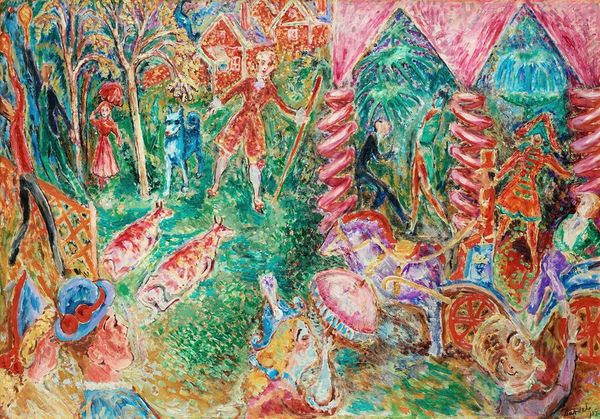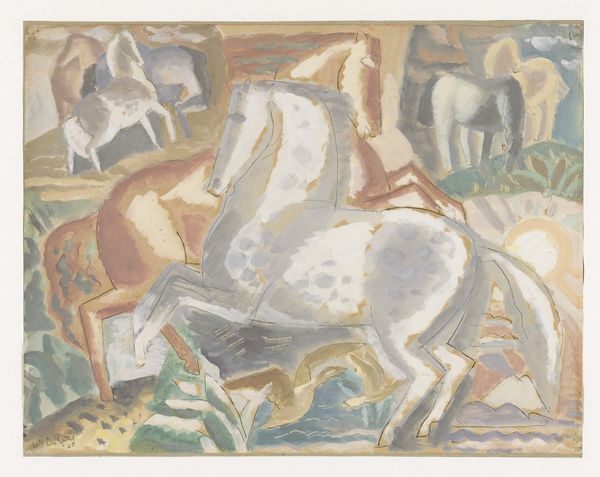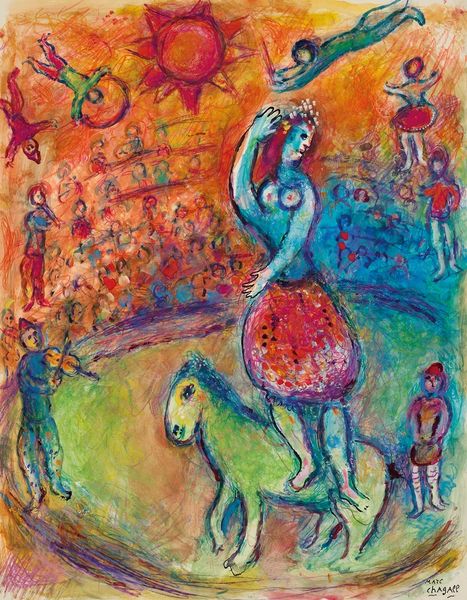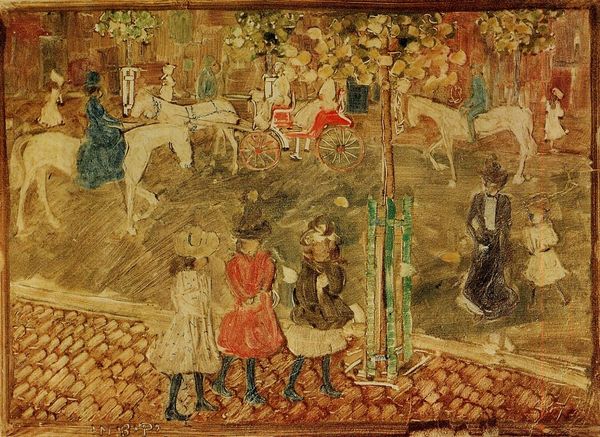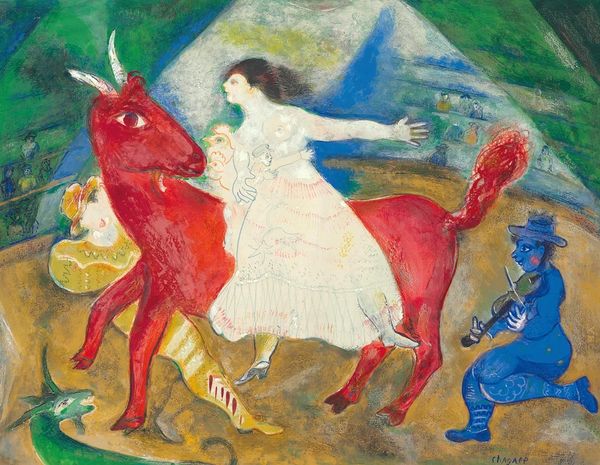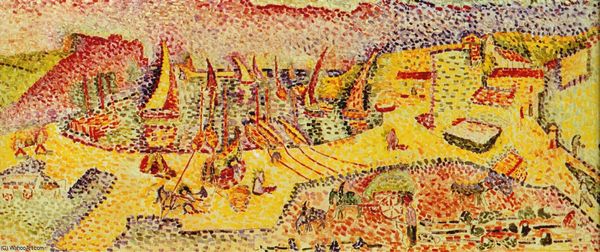
Dimensions: 29.2 x 39.4 cm
Copyright: David Burliuk,Fair Use
Editor: This is "The Stand," an acrylic on canvas painting by David Burliuk, created in 1946. I’m struck by its whimsical nature – the colors are so vibrant and the figures are cartoonish, almost like a scene from a play. The perspective is unusual. What cultural factors were influencing Burliuk when he created this work? Curator: That’s a great observation! Burliuk was a key figure in the Russian avant-garde and later emigrated to America. In 1946, he’d already spent decades removed from his homeland, steeped in a mix of memories and American influences. That expressionistic style, the flattened perspective you noted, the bright colors, are a rejection of academic realism, typical of much early-20th-century art, particularly following periods of major social disruption, like the First and Second World Wars. What effect do you think this kind of imagery might have on the viewer? Editor: I guess it pulls the viewer in? It’s less about perfectly representing reality and more about capturing a feeling or an emotion. Also, you would expect more pastoral or melancholic tones for post-war art. Why does Burliuk do this? Curator: Precisely. And that gets to the core of expressionism. It’s about subjective experience, but within a historical context. It might also be that Burliuk, despite all the trauma and conflict of the age, still felt optimistic and positive about life. Also, look at how rural and folk motifs appear in different Russian movements of the early 20th century, for example with Chagall, reflecting on national identity through rose-tinted spectacles. Considering the historical backdrop, how do you think the public might receive art like this? Editor: I suppose for some, it would feel out of step, not reflecting their suffering. For others, perhaps it would offer an escape, a reminder of the simple joys of life that were worth fighting for. Thanks; I hadn't thought about how much context matters when approaching art. Curator: Absolutely. The artwork’s cultural background and the artist’s biography frame the work, informing our understanding. Analyzing art requires an appreciation for all aspects of the subject matter.
Comments
No comments
Be the first to comment and join the conversation on the ultimate creative platform.
